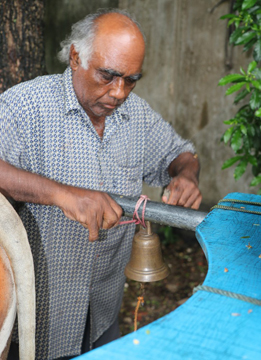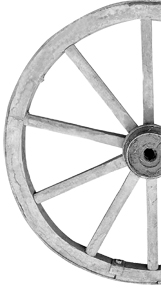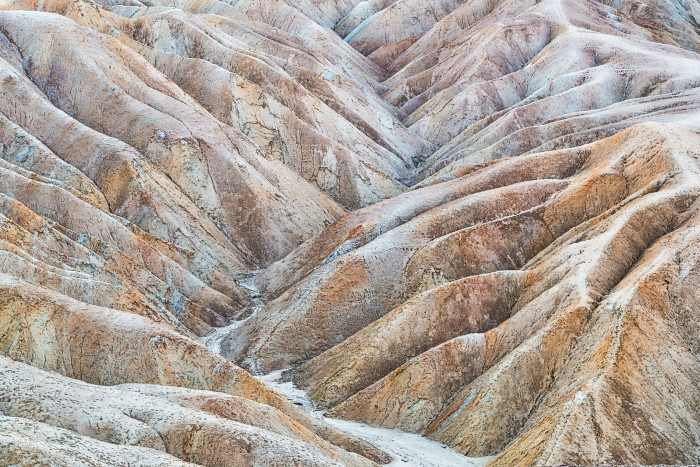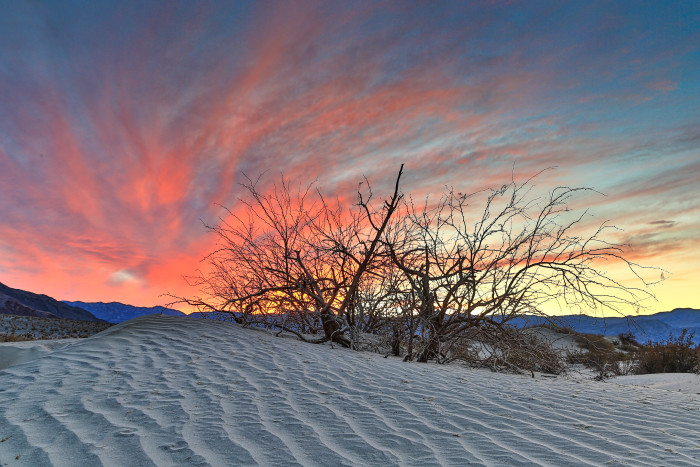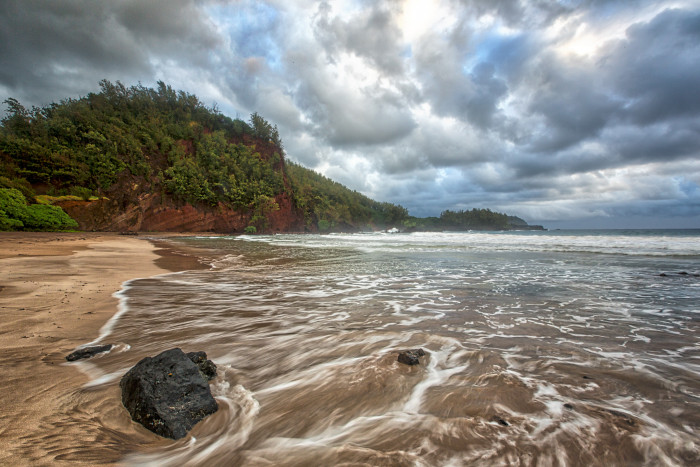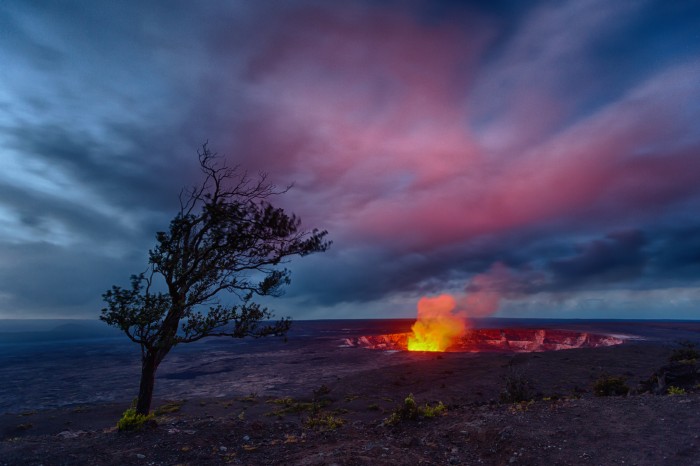I have been very fortunate to photograph in a number of beautiful locations during the first half of 2017. This has probably been my most rewarding six months of photography in the first half of any year, and therefore want to briefly memorialize these experiences in this blog post. I will go through each location and pick a few images that I think highlight the best moments of the time spent there.
Yosemite Valley, California
At the top of the list is Yosemite National Park, which I have visited five times so far this year. My first visit was January 5th, and my last was May 10th. During those times, I also conducted two private workshops with special clients that I enjoyed spending time with showing the nooks and crannies of one of my most favorite places on earth. The highlight for this blog though has to be the massive rains that California received this year, and the resultant flooding that occurred in Yosemite Valley. California had been in a six year drought until this year, where the drought formally came to an end due to massive rain and snowfalls, with this season going into the history books as the second wettest in 122 years of record-keeping!
iPhone 7 Plus; 5:05 pm, February 10, 2017
The image above was shot on the evening of February 10th when I first arrived and began to drive around the Valley. In all the years I have been visiting Yosemite I have never seen standing water in this particular location, or that much of it. It is also interesting to note the sign that shows the level of the water in this location on January 2, 1997, the last big flood in the area. The flood stands as arguably the park's worst natural disaster to date (some would give this designation to the rockfall of 1996 or the Rim Fire of 2013), and inarguably the worst flood in park history. The flooding stranded 2,100 visitors in the park, albeit fortunately there were no fatalities. Total park damages were estimated at $178 million at that time.
Canon EOS 5DS R; 1/40 sec at f/11; Canon EF 16-35mm @ 16mm; ISO 100; 8:57 am, February 11, 2017
I began thinking about a reflection shot immediately I saw this standing water and came back the next morning at sunrise. I have never seen a shot like this showing Upper and Lower Yosemite Falls reflected from this particular location previously, so was very excited to capture this unique image. The small rainbow at the base of Upper Yosemite Falls was a nice added touch.
Canon EOS 5DS R; 1/25 sec at f/16; Canon EF 16-35mm @ 16mm; ISO 125; 9:09 am, May 11, 2017
This reflection shot of El Capitan and the Three Brothers was shot three months later to the day, when warmer weather created a powerful snow melt that caused the Merced River to overflow its banks in some places that, again, I had never seen standing water. I got my lower body very wet getting this shot, a three image panorama, standing in water that was a few inches deeper that the tops of my Wellingtons that got completely filled with very cold water! All's well that ends well:)
Canon EOS 5DS R; 0.6 sec at f/18; Canon EF 24-105mm @ 32mm; ISO 125; 6:30 pm, May 11, 2017
I thought that I would leave you with this sunset shot from Cook's Meadow, with the beautiful infamous elm tree in the foreground, fondly referred to as 'Ansel's Tree'. It is interesting how the weather patterns can change so rapidly in Yosemite. When we set up at this location, it did not look like there was going to be much of a sunset this particular evening. There was a small cloud sitting at the top of Half Dome and at best we were hoping for some alpine glow on the granite face. Gradually that cloud morphed into this beautiful structure that then began to catch color from the setting sun
Monument Valley/Hunts Mesa, Arizona
I had wanted to photograph Monument Valley, Arizona, for sometime now, and when I found an Arizona Highways Photo Workshop that would take me to Monument Valley, as well as Hunts Mesa I decided to sign up immediately. Along with a good friend, we began our journey to Arizona on May 26, and returning May 30, including visits to Kayenta, Monument Valley, and the highlight of the trip being an overnight camping stop in the incomparable Hunts Mesa.
Monument Valley, a red-sand desert region on the Arizona-Utah border, is known for the towering sandstone buttes of Monument Valley Navajo Tribal Park. The park, frequently a filming location for Western movies, is accessed by the looping, 17-mile Valley Drive. The famous, steeply sloped Mittens buttes can be viewed from the road or from overlooks such as John Ford’s Point. Hunts Mesa forms the southeastern edge of Monument Valley and the northern edge of Little Capitan Valley. Its elevation is 6,370 feet (1,942 m). Access to Hunts Mesa is not through the general entrance of the park but rather through the sand dunes northeast of the town of Kayenta, Arizona.
Canon EOS 5DS R; 121 sec at f/11; Canon EF 16-35mm @ 18mm; ISO 160; 9:09 am, May 11, 2017
I chose the shot above of Monument Valley, at sunrise, where I decided to use my 10 stop filter to accentuate the clouds in the sky with a two minute long exposure. It created the streaks in the clouds and gave it an interesting, unique look that added an element of drama to the scene, that includes the infamous East and West Mittens, together with the Merrick Butte on the right.
Canon EOS 5DS R; 1/250 sec at f/16; Canon EF 24-105mm @ 35mm; ISO 400; 9:09 am, May 11, 2017
This is a sunrise shot from Hunts Mesa, after a sleepless night in a small tent and howling winds that did not let up all night long! The tent was so small I could not stretch out on the cot that we were provided with, and it had been thirty plus years since I had slept in a sleeping bag. Clearly, this confirmed that it is illegal, as well as foolish for me to consider camping even for one night again:)
Canon EOS 5DS R; 1/6 sec at f/16; Canon EF 24-105mm @ 28mm; ISO 125; 9:09 am, May 11, 2017
This is the Totem Pole at dawn, and on the left the Yel-Bichel pinnacles. The Totem Pole is a pillar or rock spire and is a highly eroded remains of a butte. It is over 400 feet tall, and was last climbed by Clint Eastwood and George Kennedy in Eastwood’s 1975 film, The Eiger Sanction. The Yei-Bi-Chei pinnacles are named for their resemblance to the real dancers who appear on the ninth and last night of the Navajo winter religious ceremony called “The Night Way”.
Canon EOS 5DS R; 1/125 sec at f/11; Canon EF 24-105mm @ 65mm; ISO 200; 9:16 am, April 30, 2017
Monument Valley, has been featured in many forms of media since the 1930s. It is perhaps most famous for its use in many John Ford films, including Stagecoach (1939) and The Searchers (1956). It has also been featured in the film Easy Rider (1969), Robert Zemeckis' film Forrest Gump, Clint Eastwood's film The Eiger Sanction (1975), and recently the popular United Kingdom television show Doctor Who in the two episodes "The Impossible Astronaut" and "Day of the Moon". This is John Ford Point, named in honor of the movie director who spent a lot of time in Monument Valley, aside from making five movies here. We had a young Navajo Native American ride the horse in this image and pose as a model that provided an added interesting, and appropriate touch to the composition.
I would like to make a mention here of the leader of our workshop, a Navajo Native American photographer of renown, LeRoy DeJolie. This is the third Arizona Highways Photo Workshop I have taken with LeRoy, and I highly recommend him as a workshop leader. His local knowledge is second to none, works very hard to help any photographer that asks, and he is the perfect Navajo guide, a mandated necessity, to get us into these beautiful ancient Navajo lands. These workshops are a very reasonable cost method of getting to locations that you want to photograph, always led by a great professional photographer, who know the right places to go and at the right times of day, together with very competent support people who work very hard to make these events memorable.
Palouse, Washington
For my next photo shoot, I joined two of my closest photographer friends on a road trip that took us to the Palouse, Washington, onto Yellowstone National Park, and finally to the Grand Teton National Park, both in Wyoming.
The Palouse is the most serene and pastoral region in southeastern Washington characterized by gentle rolling hills covered with wheat fields. The hills were formed over tens of thousands of years from wind blown dust and silt, called "loess", from dry regions to the south west. Seen from the summit of 3,612 foot high Steptoe Butte, they look like giant, colored sand dunes because they were formed in much the same way. In the spring they are lush shades of green when the wheat and barley are young, and in the summer they are dry shades of brown when the crops are ready for harvest. The Palouse hills are not only a landscape unique in the world, but they are beautiful to behold and or photograph.
This was one of the most joyful shoots that I have ever experienced. The area to photograph is endless, the compositions are unlimited, and the lighting we had, both at sunset and sunrise was simply stunning. I have so many images that I like it is very difficult to choose, but I chose the following and hope that it portrays the region well and shows the endless beauty of this magnificent region of Washington state.
Canon EOS 5DS R; 1/125 sec at f/11; Canon EF 28-300mm @ 105mm; ISO 400; 5:49 am, May 23, 2017
This first image is a panorama that I shot during the first sunrise that we did from Steptoe Butte. This location, in my humble opinion, is what makes the Palouse so photogenic. It is the highest point in the region, and at the very top, it gives a photographer a 360 degree view to shoot from. The early morning light on these 'earth dunes' is magical, and the compositions are endless. The sunsets too are special, again because of the light and never ending views.
Canon EOS 5DS R; 1/4 sec at f/9; Canon EF 28-300mm @ 60mm; ISO 100; 8:16 pm, May 22, 2017
This is an image from our first sunset shoot on Steptoe Butte. The setting sun and the lupin created this beautiful scene typical of this magical area in Washington. The 3,612-foot (1,101 m) butte is preserved as Steptoe Butte State Park, a publicly owned 150-acre (61 ha) recreation area located 12 miles (19 km) east of the nearest town, Colfax.
Canon EOS 5DS R; 1/640 sec at f/11; Canon EF 28-300mm @ 80mm; ISO 500; 4:20 pm, May 24, 2017
This is a location that we stumbled upon driving up and down roads using a map of the region provided to tourists by the Pullman Chamber of Commerce. What made this location so special on this afternoon was the way the clouds in the sky filtered the light on the landscape, where as you waited the light changed and lit up different areas just like spotlights. Again so many compositions and three to four points of view to shoot from just one location.
Canon EOS 5DS R; 1/8 sec at f/11; Canon EF 28-300mm @ 28mm; ISO 400; 8:37 pm, May 24, 2017
After shooting the location above we drove around for quite some time looking for a location to shoot the sunset. With the ever present clouds in the sky we were anticipating a colorful sunset but had great difficulty finding a suitable location until we stumbled upon this hill, at what turned out to be on an unmarked private property. Soon after we decided that this location would have to do because we were running out of time before the sunset would begin, the farm owner drove up to inform us that we were on his private property.
With our best smile and diplomatic attitude we asked him if that meant we had to leave, and also informed him that if we had seen any signs driving in that told us we were on private property we certainly would not have done so. He was kind enough to let us stay, even though he did come back later after the sunset was over and saw us drive off his property. A wonderful end to an extremely productive day!
Yellowstone National Park, Wyoming
Yellowstone National Park is a nearly 3,500-sq.-mile wilderness recreation area atop a volcanic hot spot. Mostly in Wyoming, the park spreads into parts of Montana and Idaho too. Yellowstone features dramatic canyons, alpine rivers, lush forests, hot springs and gushing geysers, including its most famous, Old Faithful. It's also home to hundreds of animal species, including bears, wolves, bison, elk and antelope. The Yellowstone Caldera is a volcanic caldera and supervolcano located underground in Yellowstone, sometimes referred to as the Yellowstone Supervolcano.
The term “supervolcano” implies an eruption of magnitude 8 on the Volcano Explosivity Index, indicating an eruption of more than 1,000 cubic kilometers (250 cubic miles) of magma. Yellowstone has had at least three such eruptions: The three eruptions, 2.1 million years ago, 1.2 million years ago and 640,000 years ago, were about 6,000, 700 and 2,500 times larger than the May 18, 1980 eruption of Mt. St. Helens in Washington State.
While the Yellowstone national park in Wyoming is stunningly beautiful, with brightly coloured sulphuric hot springs and erupting geysers, it packs a mighty punch. If the volcano were to erupt, it could cause a global catastrophe, particularly in the US where it would instantly kill 87,000 people and make two-thirds of the country immediately uninhabitable as the large spew of ash into the atmosphere would block out sunlight and directly affect life beneath it. I can only hope that this does event not need to occur in all of its majesty during my lifetime!
Canon EOS 5DS R; 1/10 sec at f/11; Canon EF 16-35mm @ 16mm; ISO 160; 5:59 am, May 26, 2017
The Grand Prismatic Spring, discovered by geologists in 1871, is the largest hot spring in America and the third largest in the world. It has a diameter of about 295 feet and a depth of 164 feet. In the center of the spring the water is so hot that the bacteria is not able to survive, whereas the temperature gradually drops towards the edges. This explains why the dazzling bright yellows, fierce oranges and deep reds only appear around the edges while the deep blue remains confined to the center. It is located in the Midway Geyser Basin and is one of my favorite geyser springs to photograph in Yellowstone.
One item of interest that we learned while we were at the Yellowstone Visitor Center, is that the Park Rangers have been in the process of constructing a viewing platform on on the ridge that you see in the background of the image above. It is scheduled to open in July this year, and will provide a magnificent photographic opportunity to capture the whole of this spring from above, something that has only been previously available to adventurous people who were willing to climb up into the hills around this area. Can't wait to get there again and photograph from the new location!
Canon EOS 5DS R; 1/5 sec at f/14; Canon EF 16-35mm @ 27mm; ISO 125; 5:52 am, May 28, 2017
Silex Spring, a favorite go to sunrise location when in Yellowstone, has a temperature of 193 F and is 36 feet x 40 feet, and a depth of 27 feet. It is unknown when or by whom this colorful blue spring was named, but the name Silex may refer to the word silica. Some believe it may refer to the Silex coffee percolator. The spring boils occasionally and, periodically large bubbles of gas rise to the surface. The 1959 earthquake caused it to erupt and increased the flow. The discharge is now 70 to 100 gallons per minute.
Canon EOS 5DS R; 1/25 sec at f/11; Canon EF 24-105mm @ 28mm; ISO 125; 2:15 pm, May 27, 2017
This is Lower Yellowstone Falls, and an area of the Park that I had not visited the last time I was here in the fall last year. Yellowstone Falls consist of two major waterfalls on the Yellowstone River. As the Yellowstone river flows north from Yellowstone Lake, it leaves the Hayden Valley and plunges first over Upper Yellowstone Falls and then a quarter mile (400 m) downstream over Lower Yellowstone Falls, at which point it then enters the Grand Canyon of Yellowstone, which is up to 1,000 feet (304 m) deep.
Canon EOS 5DS R; 1/500 sec at f/5.6; Canon EF 1oo-400mm @ 100mm; ISO 800; 9:21 am, May 28, 2017
On our final day in Yellowstone we set out to photograph Bison. Not exactly my expertise so I wanted to get some practice in and bring back one or two images of these majestic animals. This was our first stop, where I managed to get this beautiful animal as it just crossed the Madison River, near West Yellowstone. The male Bison can weigh approximately 2000 lbs., and this one still had on its winter coat, albeit soaking wet in the rear because it had just swam across the river.
Grand Teton National Park
Grand Teton National Park is in the northwest of the state of Wyoming. It encompasses the Teton mountain range, the 4,000-meter Grand Teton peak, and the valley known as Jackson Hole. It’s a popular destination in summer for mountaineering, hiking, backcountry camping and fishing, linked to nearby Yellowstone National Park by the John D. Rockefeller, Jr. Memorial Parkway. It is only 10 miles (16 km) south of Yellowstone National Park. Grand Teton National Park is named for Grand Teton, the tallest mountain in the Teton Range. This is a beautiful location to stop at on your way into Yellowstone or on your way out. I first visited it last year in the fall and wanted to see it in the spring, which did not disappoint one bit! From my experience in this area I have found that there are four classic locations for photography, and I have images from each one below.
Canon EOS 5DS R; 1/4 sec at f/16; Canon EF 24-105mm @ 82mm; ISO 100; 5:18 am, May 29, 2017
Sunrise at the T.A. Moulton Barn and with the Grand Teton showing in the background. The T. A. Moulton Barn is all that remains of the homestead built by Thomas Alma Moulton and his sons between about 1912 and 1945. It sits west of the road known as Mormon Row, in an area called Antelope Flats. The property with the barn was one of the last parcels sold to the National Park Service by the Moulton family.
Canon EOS 5DS R; 1/15 sec at f/11; Canon EF 24-105mm @ 50mm; ISO 800; 4:45 am, May 30, 2017
Oxbow Bend in Grand Teton National Park is located just a little over a mile straight east of the Jackson Lake Junction on Highway 89. It's where the Snake River gets extremely wide and Mount Moran is seen reflecting in the calm water in all it's glory. It's really a sight to behold. Oxbow Bend is without a doubt the most photographed place in the entire park. The image of the Snake River with Mount Moran's reflection is iconic and is probably the most recognized image of Grand Teton National Park throughout the world. It is a magnificent sunrise location, and it is grand central station in the fall, where I have seen over 300 plus photographers line up for a sunrise shoot!
Canon EOS 5DS R; 1/13 sec at f/11; Canon EF 24-105mm @ 32mm; ISO 125o; 4:57 am, May 31, 2017
Schwabachers Landing is a boat landing located a few miles south of Snake River Overlook, along the east shore of the Snake River. It provides an opportunity for beautiful reflections of the Grand Teton range, and is especially beautiful in low morning light at sunrise. Having the duck in the foreground was a bonus, and in order to ensure it was sharp I adjusted my ISO to 1250. One huge noticeable difference shooting in these locations in the spring vs the fall, is in spring there were a significantly less number of photographers to contend with in all of these locations.
Some 75 years ago you could see the bend of the Snake River, where Ansel Adams included it in one of his most iconic images in 1942, The Tetons and the Snake River. Today the trees have grown, as you can see in the image below, and you can no longer see that bend in the river, though it is still one of my favorite places to see and photograph the Grand Teton Range.
Canon EOS 5D Mark III; 1/25 sec at f/16; Canon EF 24-105mm @ 40mm; ISO 10o; 4:37 pm, May 30, 2017
On the last evening of our stay in the Park, we decided that we would go out and practice photographing Bison again. That is until, driving out of Jackson we noticed a massive and beautiful storm sitting right above the Teton Range. We immediately decided that we should head straight out to the Snake River Outlook, an ideal location to photograph this gnarly looking storm. I was so excited to have this opportunity as I had never seen such a beautiful looking sky over this mountain range and was so looking forward to the chance to capture some unique images.
We literarily raced out to the location, got out of the vehicle, opened the trunk to reach for my camera and tripod when it hit me - I had left both my camera bodies in my hotel room. I was incredulous that I could have made such a stupid mistake! We had been photographing Bison earlier in the day, and I had long lenses on both camera bodies which gave me a wider choice of focal range. When we got back to our hotel earlier in the day, I grabbed both bodies and headed up to the room to change lenses and set everything back to the way it normally was. I then forgot to bring them back out with me to the vehicle when we left.
The owner of the vehicle we were traveling in very kindly offered his vehicle for me to drive back and fetch my camera, which I did in about 45 minutes, and by the time I got back there was still a beautiful sky available and I ended up with some nice images after all. You get by with a little help from your friends:)
San Francisco
Canon EOS 5DS R; 1/120 sec at f/9; Canon EF 24-105mm @ 50mm; ISO 1000; 7:40 pm, June 24, 2017
And finally, I will leave you with an image of Mt. Tamalpais that I shot last Sunday. I took a very good friend and photographer with me to show her this phenomenon of coastal fog that rolls in and creates beautiful scenes as it washes over into the Marin Headlands in the summer. We went back to a spot that my daughter Michelle, who lives in the area, took me to just over two years ago. We had a lot more fog on that particular day, though this experience did not disappoint!
As I wrap up this blog post just before the celebration of this country's Independence Day, I feel grateful and excited about the photographic opportunities that I have had so far this year. I also feel grateful to have some wonderful friends to accompany me on these photo journeys, whose presence makes these adventures even more fun. I am now getting ready to leave on my first professional assignment for a marketing company in San Francisco. I am being sent out to the beautiful island of Kauai, Hawaii, on the 4th of July returning July 13th, to shoot landscape images on what is so rightfully called the 'Garden Isle'.
The adventure continues!















































